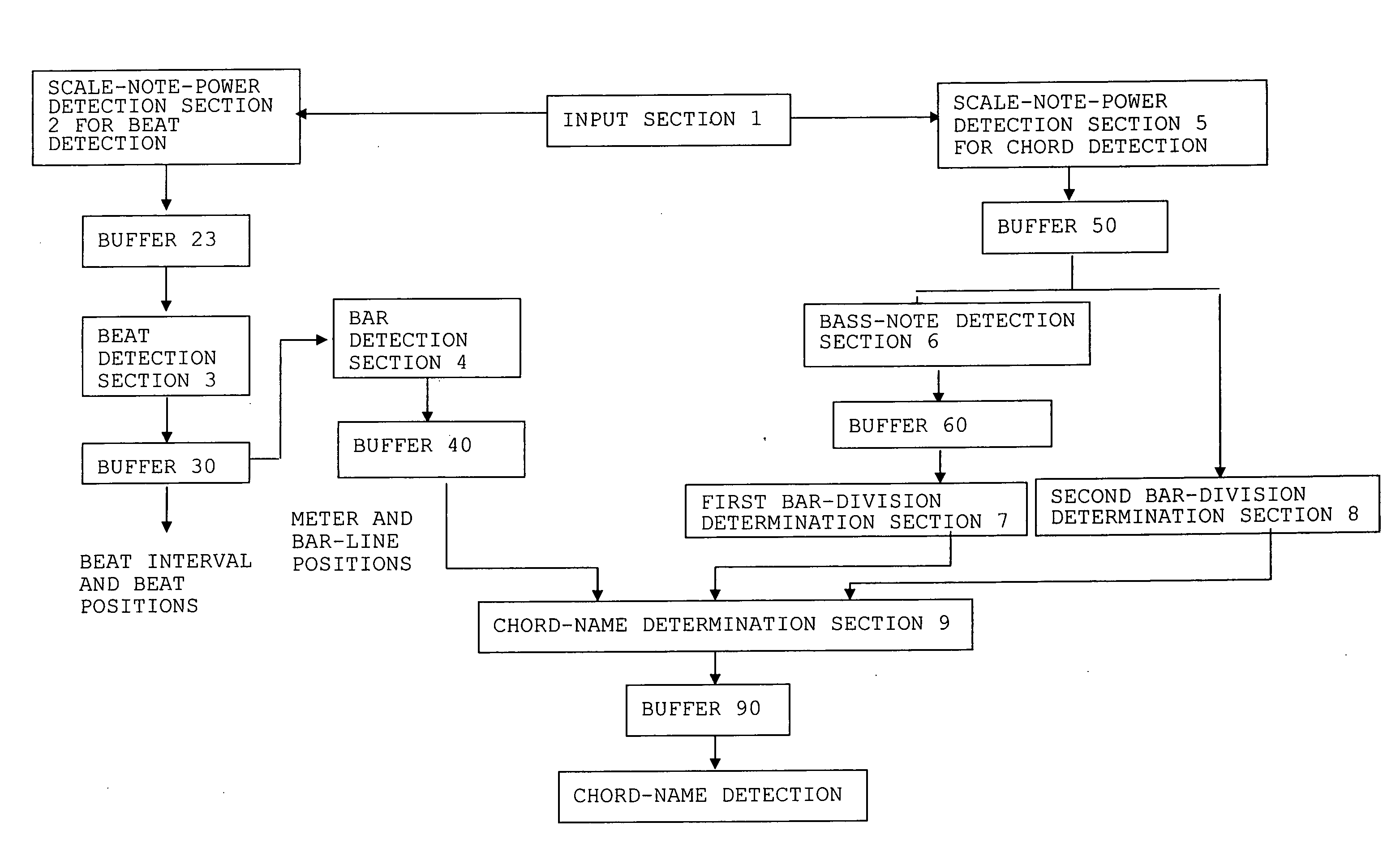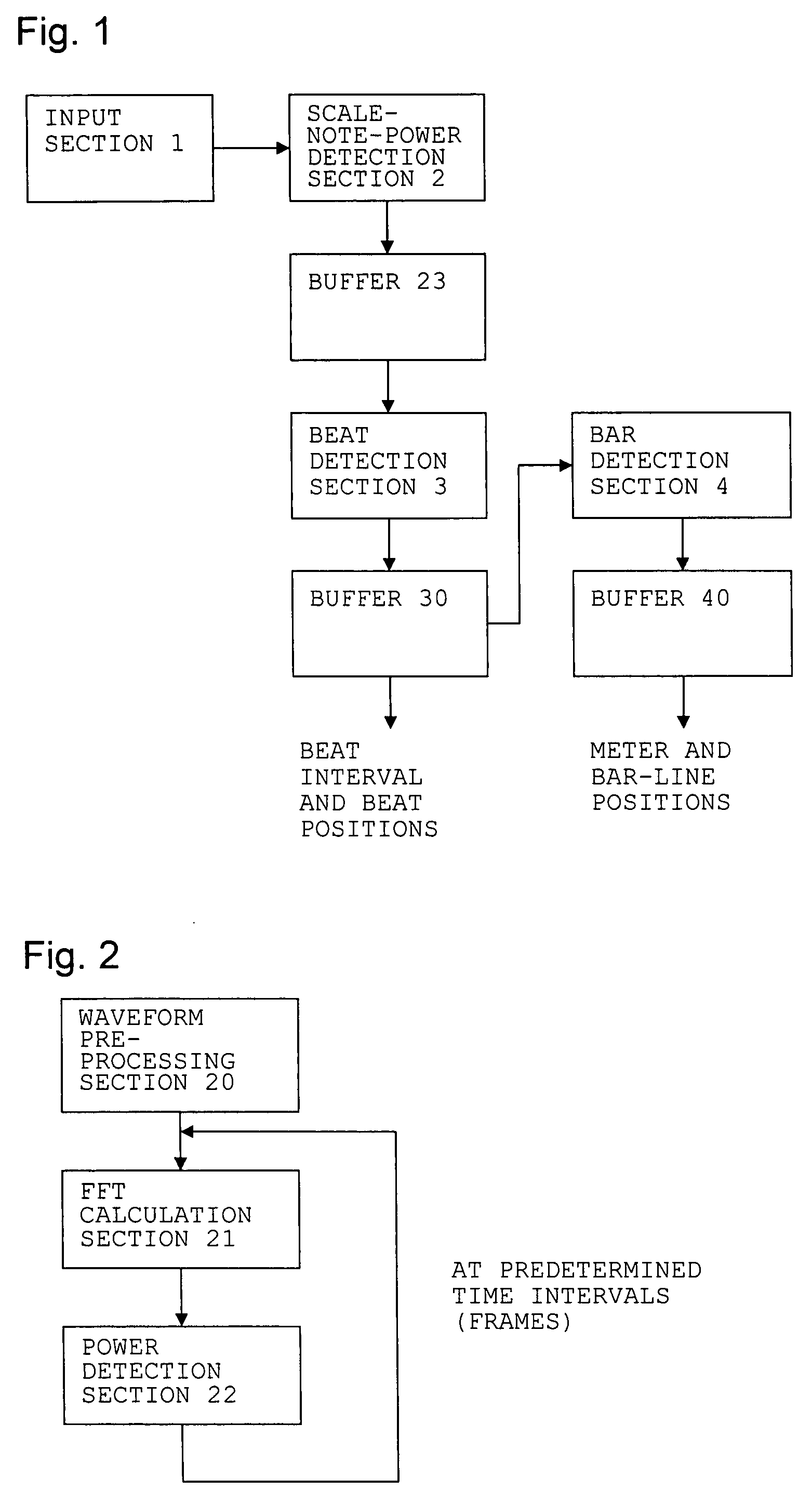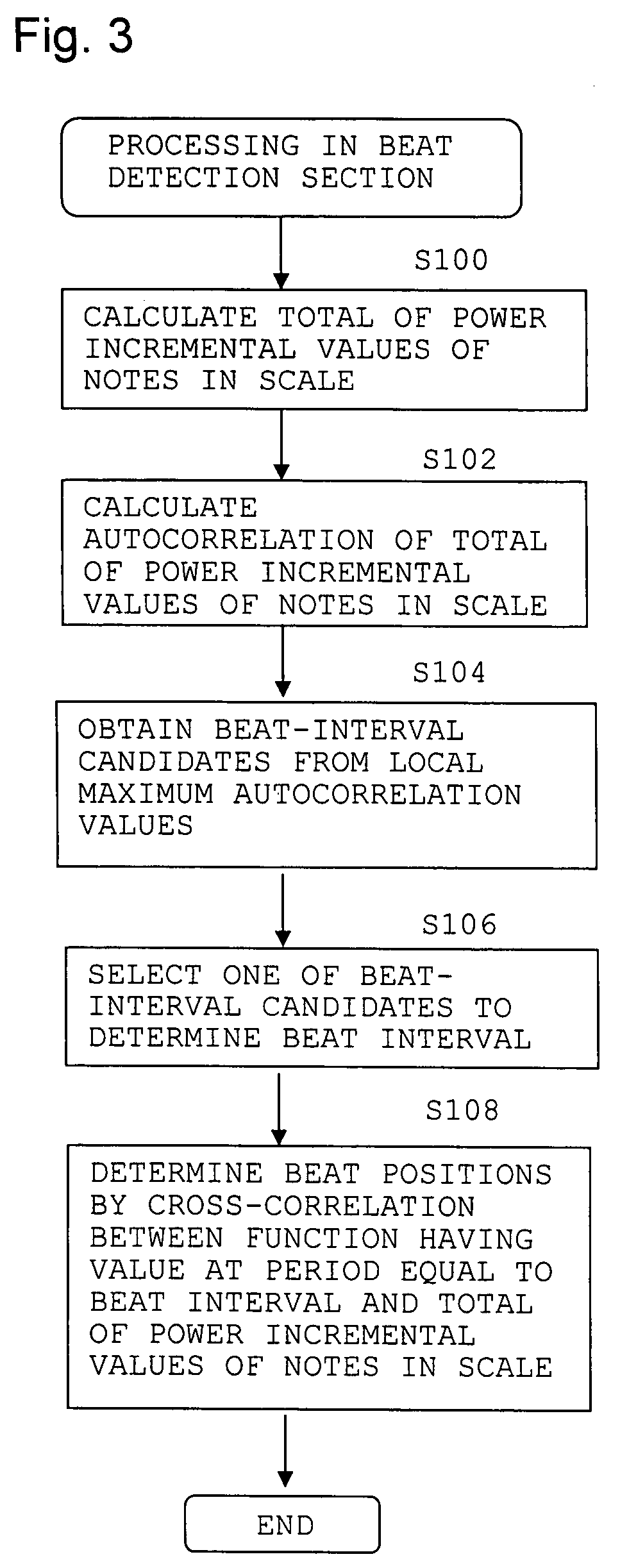Chord-name detection apparatus and chord-name detection program
a detection apparatus and a technology for chords, applied in the direction of instruments, toys, gearworks, etc., can solve the problem that the bass note cannot be detected correctly with this method, and achieve the effect of convenient distribution or sal
- Summary
- Abstract
- Description
- Claims
- Application Information
AI Technical Summary
Benefits of technology
Problems solved by technology
Method used
Image
Examples
first embodiment
[0114]FIG. 12 is a block diagram of the chord-name detection apparatus according to a first embodiment of the present invention. In the figure, the structures of a beat detection section and a bar detection section are basically the same as those described above. Since the structures of a tempo detection part and a chord detection part are partially different from those described above, a description thereof will be made below without mathematical expressions, with some portions already mentioned above.
[0115]In the figure, the chord-name detection apparatus includes an input section 1 for receiving an acoustic signal; a scale-note-power detection section 2 for beat detection for applying FFT to the received acoustic signal at predetermined time intervals (frames) by using parameters suited to beat detection and for obtaining the power of each note in a scale at each frame interval from the obtained power spectrum; a beat detection section 3 for summing up, for all the notes in the s...
second embodiment
[0165]A second embodiment of the present invention differs from the first embodiment in that the Euclidean distance of the power of each note in the scale is calculated to determine the degree of change in the chord to divide a bar and to detect chords.
[0166]In that case, however, if the Euclidean distance is simply calculated, it becomes large at a sudden sound increase (at the start of a musical piece or the like) and a sudden sound attenuation (at the end of a musical piece or a break), causing the risk of dividing the bar just due to magnifications of the sound even though the chord actually has no change. Therefore, before the Euclidean distance is calculated, the power of each note in the scale is normalized as shown in FIG. 17A to 17D (the powers shown in FIG. 17A are normalized to those shown in FIG. 17C, and the powers shown in FIG. 17B are normalized to those shown in FIG. 17D). When normalization to the smallest power, not to the largest power, is performed (see FIGS. 17A...
PUM
 Login to View More
Login to View More Abstract
Description
Claims
Application Information
 Login to View More
Login to View More - R&D
- Intellectual Property
- Life Sciences
- Materials
- Tech Scout
- Unparalleled Data Quality
- Higher Quality Content
- 60% Fewer Hallucinations
Browse by: Latest US Patents, China's latest patents, Technical Efficacy Thesaurus, Application Domain, Technology Topic, Popular Technical Reports.
© 2025 PatSnap. All rights reserved.Legal|Privacy policy|Modern Slavery Act Transparency Statement|Sitemap|About US| Contact US: help@patsnap.com



